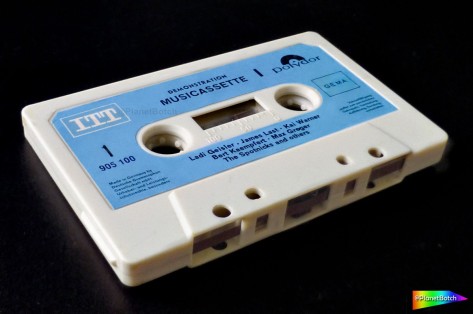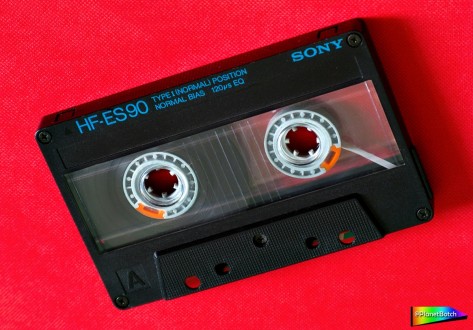
The Type I normal bias audio cassette was the standard and most widely compatible tape format – the direct descendant of the original compact cassette. The tape preserved sound by means of a ferric-oxide coating, and first appeared on the consumer market in the mid 1960s. Heading the post you can see a fairly early Type I musicassette demonstrator, which was used to help drive the cassette format into wider use in 1970.
Even though the new high bias Type II cassette appeared in the early 1970s, through the rest of the decade the standard Type I format remained so dominant in the market that it wasn’t felt necessary by manufacturers to overtly distinguish it as a type. Only in the 1980s, when high bias tapes really began to take off, did type designations routinely start to appear on cassette shells and/or labels.
However, even the massive surge in popularity for high bias tapes could not dislodge the Type I from its best-selling position in the blank cassette market. Although Type Is were as a breed inferior to Type IIs, they were usually considerably cheaper (a big issue for bulk-buyers), and they didn’t require any special provisions when it came to recording equipment. Even the most basic gear was virtually guaranteed to be compatible with Type I cassettes, so for voice recording (dictaphone) applications and the like they were a natural choice.
Due to their low cost, they were also the default cassette type for ‘professional’ bootlegging, and that was a massive industry, with record fairs and mail order ops shipping out vast quantities of surreptitious live recordings, before you even looked at the ‘forgery’ market of fake commercial albums with duplicate covers and labels. It’s often recalled that forged commercial cassette albums did the rounds on the street markets, car boot sales and what have you, but I’ve picked up one or two very dodgy looking/sounding specimens from record shops, so I don’t think fakes were confined to ‘open air’ outlets.
Essentially, anyone who had a high consumption rate for audio cassettes – other than record companies, who could of course recover their outlay through the retail process – was very strongly motivated to buy Type Is for most of the time. On price alone, they were never gonna lose their grip on the market.
In terms of sound, the Type I cassette was hugely varied, depending on the price point within a given range, and also depending on the brand. Brands could differ enormously in sound. And by the 1980s, most brands had multiple Type I options in their ranges, from the cheapie with fairly (or seriously) intrusive tape hiss and a dull, woolly tonality, up to the supremely sophisticated premium Type I, with a decent amount of high frequency definition and very low noise.
To achieve improved performance, manufacturers would add cobalt to the basic ferric formulation in their own preferred ‘recipe’. It was possible to take the treble response of a Type I tape into the general ballpark of a poorer quality Type II, but no Type I could ever produce the super-sparkle you’d find in a really good chrome high bias formulation.
The picture above shows one of the finest Type I cassettes on the consumer market of the mid 1980s. The Sony HF-ES90 was a premium product for the discerning customer who wanted optimum performance without moving away from the standard, most widely compatible cassette format. Definition was nearer to that of a Type II high bias tape than a regular, basic Type I, and in fact the Sony HF-ES90 was actually better than some high bias cassettes – the Memorex HBII being a case in point.
The bass reproduction on the HF-ES90 is seriously, seriously strong, and there’s a good balance right across the frequency range. Indeed the HF-ES90 can take more bass than at least one of my sets of speakers can! It’s awesome, and no chrome tape I’m aware of could ever approach that kind of impact and kick in the low frequencies. Noise is not an issue at all. There is some, but it’s minimal. Equally, I can find no evidence of glitches or drop-outs.
There are lots of examples of Type I cassettes on Tape Tardis, all with images, and most with written documentation of their characteristics. Please refer to the Blank Cassettes feed or the full index for more.

